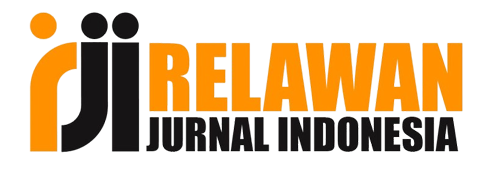Investigating Students' Views on Assessment Models in EFL Classroom
Abstract
Investigating Students' Views on Assessment Models in EFL Classroom. One of the
important elements in the learning context is assessment. This study aimed at
exploring the assessment model of teachers used in the teaching and learning
process in the classroom. The model of assessment measured through students?
perception was collected from questionnaire. The survey questionnaire form
consisted of five main components to study students? perception on teachers? steps
in building assessment model. Those are planning of assessment model, presentation
of assessment model, various of assessment model in classroom, traditional
assessment model, e-assessment model and disclosure of evaluation results. Based
on the findings of this study, the test model based on students' perceptions elicited
a positive response from English teachers using the model in the classroom.
However, it should be noted that the planning for the use of the test model must be
submitted prior to the implementation of the test and comprehensive so that
students can prepare themselves adequately for the exam. Furthermore, so that
learning objectives can be achieved ideally, the use of the test model must also pay
attention to the level of difficulty and ease of each question item.
Keywords: Students? Perception, Assessment Model, EFL Classroom
Full Text:
PDFReferences
Ajjawi, R., Tai, J., Huu Nghia, T. le, Boud, D., Johnson, L., & Patrick, C. J. (2020). Aligning assessment with the needs of work-integrated learning: the challenges of authentic assessment in a complex context. Assessment and Evaluation in Higher Education, 45(2).
https://doi.org/10.1080/02602938.2019.1639613
Andrade, H. L. (2019). A Critical Review of Research on Student Self-
Assessment. In Frontiers in Education (Vol. 4). https://doi.org/10.3389/feduc.2019.00087
Black, P., & Wiliam, D. (2009). Developing the theory of formative assessment. Educational Assessment, Evaluation and Accountability, 21(1). https://doi.org/10.1007/s11092-008-9068-5
Black, P., & Wiliam, D. (2018). Classroom assessment and pedagogy. Assessment in Education: Principles, Policy and Practice, 25(6).
https://doi.org/10.1080/0969594X.2018.1441807
DeLuca, C., Rickey, N., & Coombs, A. (2021). Exploring assessment across cultures: Teachers? approaches to assessment in the U.S., China, and Canada. Cogent Education, 8(1).
https://doi.org/10.1080/2331186X.2021.1921903
Double, K. S., McGrane, J. A., & Hopfenbeck, T. N. (2020). The Impact of Peer Assessment on Academic Performance: A Meta-analysis of Control Group Studies. Educational Psychology Review, 32(2).
https://doi.org/10.1007/s10648-019-09510-3.
Elliott, S. N. (1995). Creating meaningful performance assessments. ERIC Digest E531. EDRS no: ED381985.
Farhady, H., & Tavassoli, K. (2021). EFL teachers? perceptions and practices of their language assessment knowledge. Language Testing in Asia, 11(1). https://doi.org/10.1186/s40468-021-00135-4
Ferretti, F., Santi, G. R. P., Zozzo, A. del, Garzetti, M., & Bolondi, G. (2021). Assessment practices and beliefs: Teachers? perspectives on assessment during long distance learning. Education Sciences, 11(6).
https://doi.org/10.3390/educsci11060264
Gan, Z., He, J., & Liu, F. (2019). Understanding classroom assessment practices and learning motivation in secondary EFL students. Journal of Asia TEFL, 16(3). https://doi.org/10.18823/asiatefl.2019.16.3.2.783
Guadu, Z. B., & Boersma, E. J. (2018). EFL Instructors? Beliefs and Practices of
Formative Assessment in Teaching Writing. Journal of Language Teaching
and Research, 9(1). https://doi.org/10.17507/jltr.0901.06
Harrison, C. J., K'nings, K. D., Schuwirth, L. W. T., Wass, V., & van der Vleuten,
C. P. M. (2017). Changing the culture of assessment: the dominance of the
summative assessment paradigm. BMC Medical Education, 17(1).
https://doi.org/10.1186/s12909-017-0912-5
Ibarra-S?iz, M. S., Rodr?guez-G?mez, G., & Boud, D. (2021). The quality of
assessment tasks as a determinant of learning. Assessment and Evaluation
in Higher Education, 46(6). https://doi.org/10.1080/02602938.2020.1828268
Isnaini, I., Sunimaryanti, S., & Andre, L. (2021). Assessment Principles and
Practices Quality Assessments in A Digital Age. SPEKTRUM: Jurnal
Pendidikan Luar Sekolah (PLS), 9(2).
https://doi.org/10.24036/spektrumpls.v9i2.112711
Lee, D. (2017). The Role of Assessment in Language Teaching, Learning and
Materials Development. SSRN Electronic Journal.
https://doi.org/10.2139/ssrn.2881901
LIU, Y. (2017). Assessment in English Language Teaching and Learning. DEStech
Transactions on Social Science, Education and Human Science, icesd.
https://doi.org/10.12783/dtssehs/icesd2017/11513
Nieminen, J. H. (2022). Assessment for Inclusion: rethinking inclusive
assessment in higher education. Teaching in Higher Education.
https://doi.org/10.1080/13562517.2021.2021395.
Phipps, S. & Brackbill, M. (2009). Relationship between Assessment item
Format & Item performance Characteristics. American journal of
Pharmaceutical Education. 73 (8).
Roever, C., & Phakiti, A. (2017). Quantitative methods for Second Language
Research. In Quantitative methods for Second Language Research.
https://doi.org/10.4324/9780203067659
Roever, C., & Phakiti, A. (2018). Descriptive Statistics in SPSS. In Quantitative
methods for Second Language Research.
https://doi.org/10.4324/9780203067659-4
Saputri, I., Nurkamto, J., & Wahyuni, D. S. (2019). The Implementation of
Authentic Assessment in English Language Teaching. English Education,
(3). https://doi.org/10.20961/eed.v6i3.35881
Schellekens, L. H., Bok, H. G. J., de Jong, L. H., van der Schaaf, M. F., Kremer, W.
D. J., & van der Vleuten, C. P. M. (2021). A scoping review on the notions of
Assessment as Learning (AaL), Assessment for Learning (AfL), and
Assessment of Learning (AoL). In Studies in Educational Evaluation (Vol. 71).
https://doi.org/10.1016/j.stueduc.2021.101094
Seifert, T., & Feliks, O. (2019). Online self-assessment and peer-assessment as a
tool to enhance student-teachers? assessment skills. Assessment and
Evaluation in Higher Education, 44(2).
https://doi.org/10.1080/02602938.2018.1487023
Swatevacharkul, R., & Boonma, N. (2021). Learner autonomy assessment of
English language teaching students in an international program in
Thailand. Indonesian Journal of Applied Linguistics, 10(3).
https://doi.org/10.17509/ijal.v10i3.31764
Tharwat, A. (2018). Classification assessment methods. Applied Computing and
Informatics, 17(1). https://doi.org/10.1016/j.aci.2018.08.003
Tosuncuoglu, I. (2018). Importance of Assessment in ELT. Journal of Education
and Training Studies, 6(9). https://doi.org/10.11114/jets.v6i9.3443
Wang, L., Lee, I., & Park, M. (2020). Chinese university EFL teachers? beliefs and
practices of classroom writing assessment. Studies in Educational
Evaluation, 66. https://doi.org/10.1016/j.stueduc.2020.100890
Wang, X. (2017). A Chinese EFL Teacher?s Classroom Assessment Practices.
Language Assessment Quarterly, 14(4).
https://doi.org/10.1080/15434303.2017.1393819
Wiliam, D. (2011). What is assessment for learning? Studies in Educational
Evaluation, 37(1). https://doi.org/10.1016/j.stueduc.2011.03.001
Yuzar, E. (2020). Incorporating Communicative Competence in Assessment and
English Language Teaching in Multilingual Settings. REiLA : Journal of
Research and Innovation in Language, 2(1).
https://doi.org/10.31849/reila.v2i1.3864
DOI: http://dx.doi.org/10.30984/jeltis.v2i2.2064
Article Metrics
Abstract view : 489 timesPDF - 313 times
Refbacks
- There are currently no refbacks.







